Santa Maria de la Cabeza, a castle with a unique and unforgettable design [ENG-ESP]

[ENG]
Greetings dear friends of Architecture+Design, welcome to my blog, today I share with you a review inspired by fortresses. In the city where I live there are two large and beautiful castles, San Antonio de la Eminencia, one of the best known among the population of Cuman and Santa Maria de la Cabeza, an emblematic place full of history. Santa María de la Cabeza is not a very big castle, nor does it have huge and luxurious halls, in fact, of this fort only its ruins have remained, however, it is still beautiful, besides being one of the most iconic places in the city. Because it is my favorite, because it is located in the historic center of the city and nothing like a walk through this old foundational area of the capital of Sucre to admire the structural designs and the colonial style that characterizes it.
This castle is not very well known among the population of Cuman and this is possibly because it is located right next to the Santa Inés Church, one of the oldest temples in the city. Despite the antiquity of this church, the Santa María de la Cabeza Castle was built many years before, in the 1600's. It is incredible that this fortification is not as popular as the San Antonio de la Eminencia Castle. The truth is that the Santa María de la Cabeza fortress functioned on its foundations as a government house for many years. It served as headquarters for governors and military, specifically as a residence, in addition to housing important belongings for the time considered as priceless treasures. Currently, the ruins of the Santa María de la Cabeza castle offer us a solemn and imposing structure, elaborated in blocks of marly limestone in combination with fossiliferous sandstone, materials that were extracted from the same hills that abound in the city of Cumaná.

Access to the castle is not available to the public through the main door, to enter it we must do it inside the church Santa Inés, so we will see it as if it were part of an attached structure located in the courtyard of the majestic Catholic temple, however, they are different and separate heritage. The first thing we will observe is the polished granite floor, a weather-resistant stone that in turn reflects an elegant and sophisticated appearance and that I also consider ideal for historic places. Upon entering the space where the castle is located, it is impossible not to be captivated by its gardens, exalted palm trees and colorful flowers that give us the Trinitaria bushes that were planted many years ago in the place.



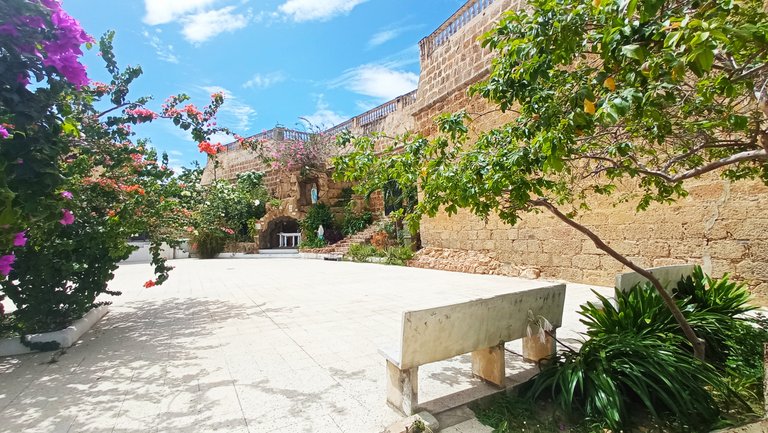
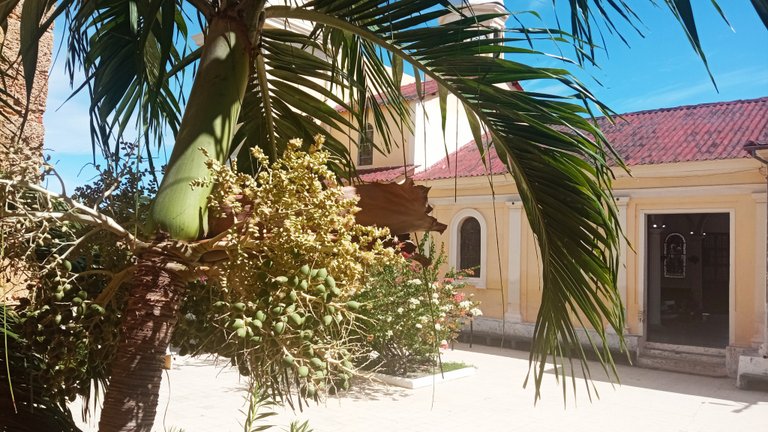


After the earthquake occurred in 1797, the castle was left in ruins, basically uninhabitable, however, the parish priests decided to give it a religious character by building a hermitage in the upper part and a grotto near the entrance. The grotto is an exact replica of the one that exists in France in honor of the Virgin of Lourdes. In the grotto there is a statue of a girl, symbolizing Bernadette carrying flowers to the Virgin of Lourdes. The images are allusive to the 18 apparitions of the Virgin of Lourdes to Bernadette. The statues were made of wood and cement. The replica of the grotto was made with natural and carved rocks that were transported from the original grotto in France. On the other hand, in the grotto there are several marble plaques, where the believers have written messages of gratitude to the Virgin of Lourdes for the miracles they have received.

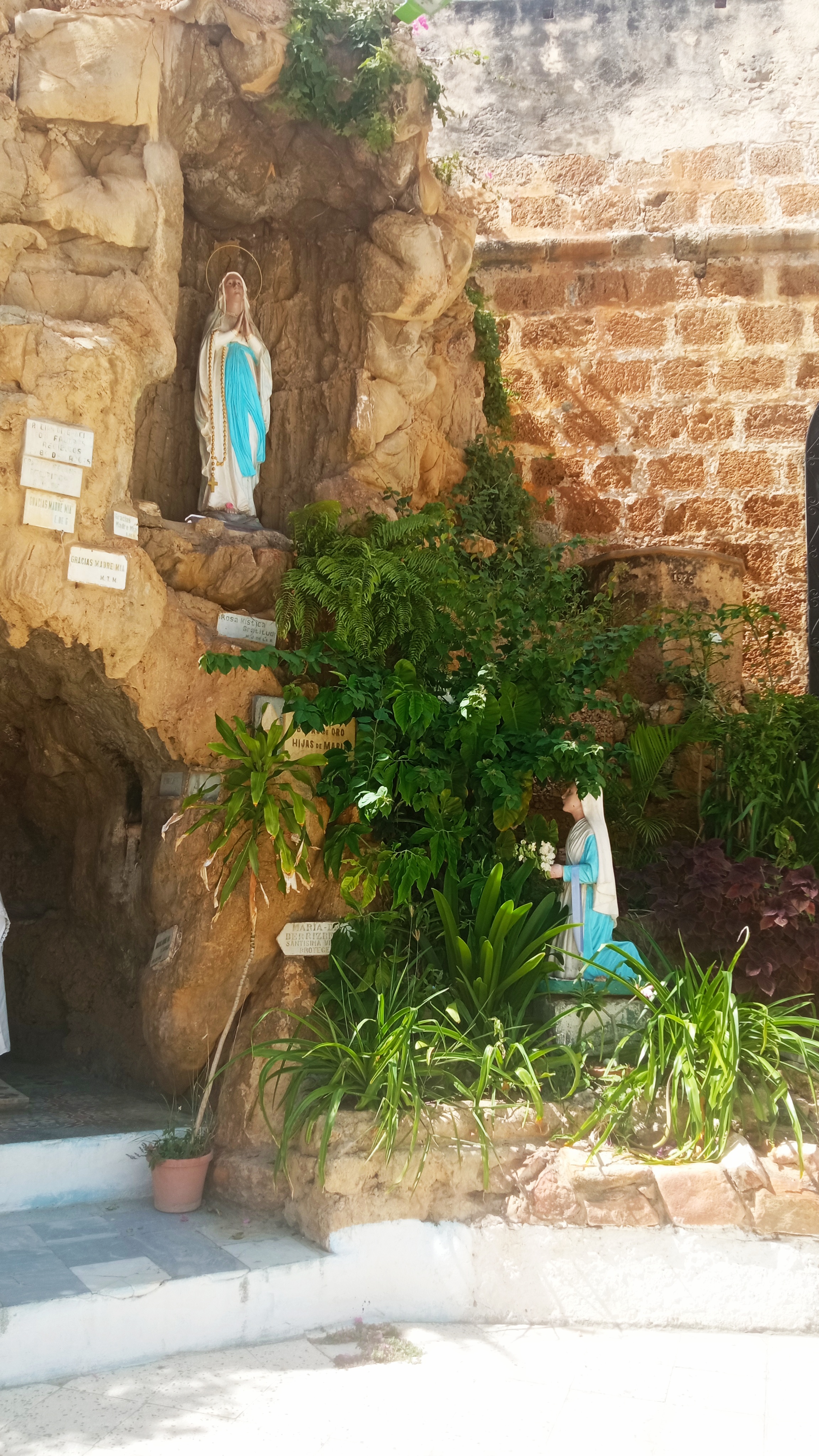
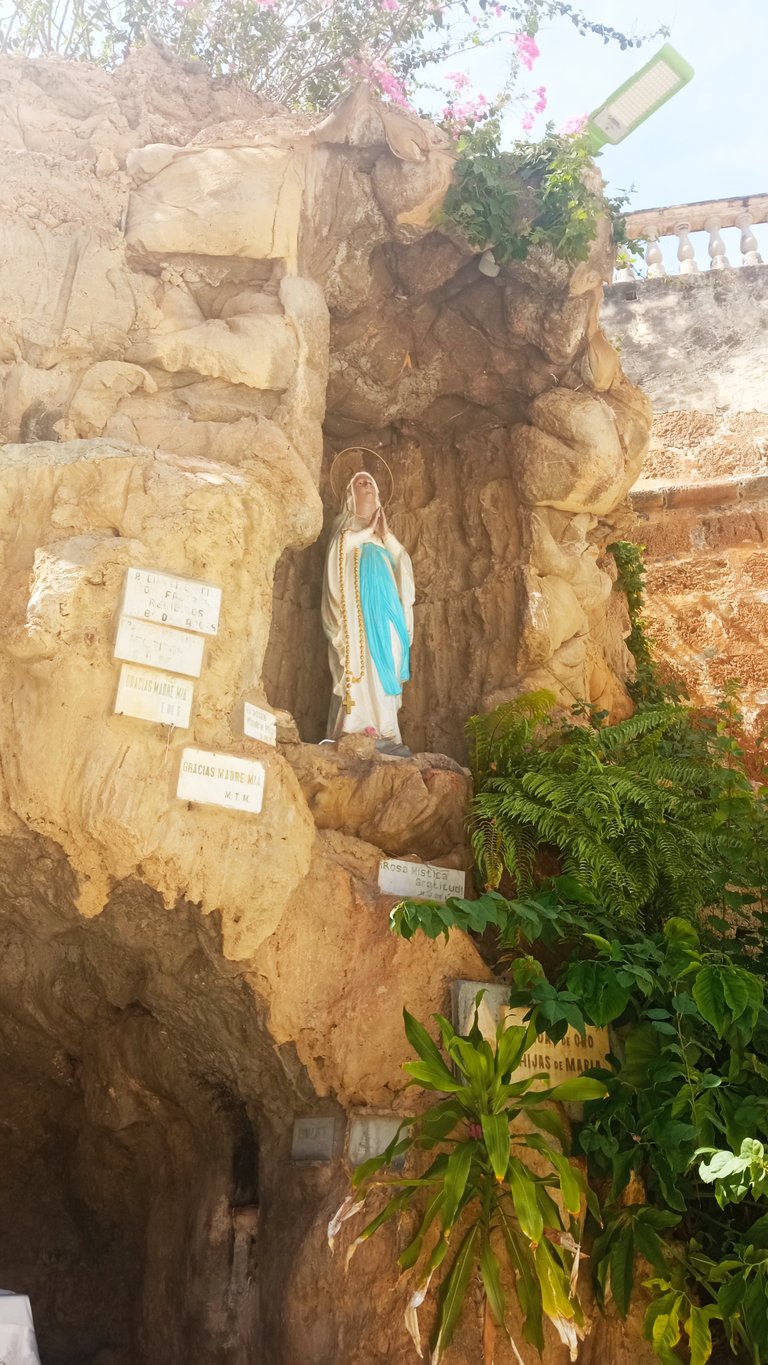

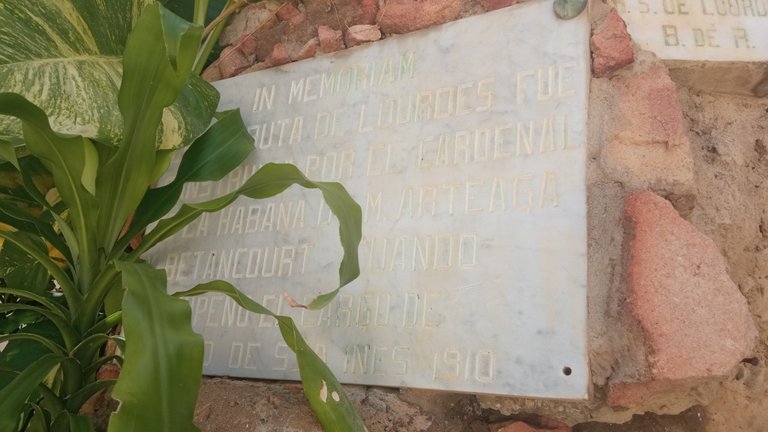
Once I had admired the front structure, the grotto and its surroundings, I entered the catillo. First, we found several elaborate stone steps and a metal arched door painted black. When entering, there are no compartments in the castle, only an extensive concrete staircase that takes us to the upper floor of the castle, where the Ermita de la Virgen del Carmen is built. The walls contain rough and cracked parts, product of the erosion occurred in the time.


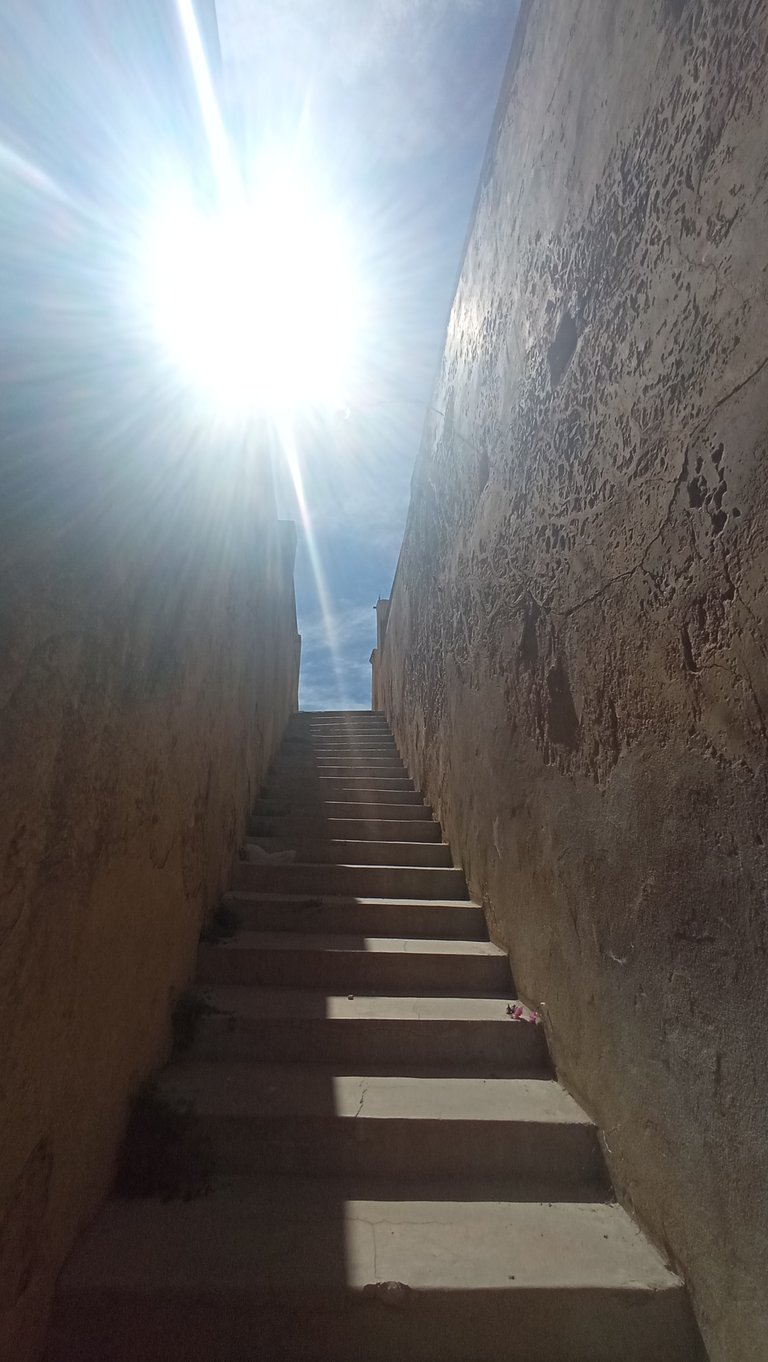
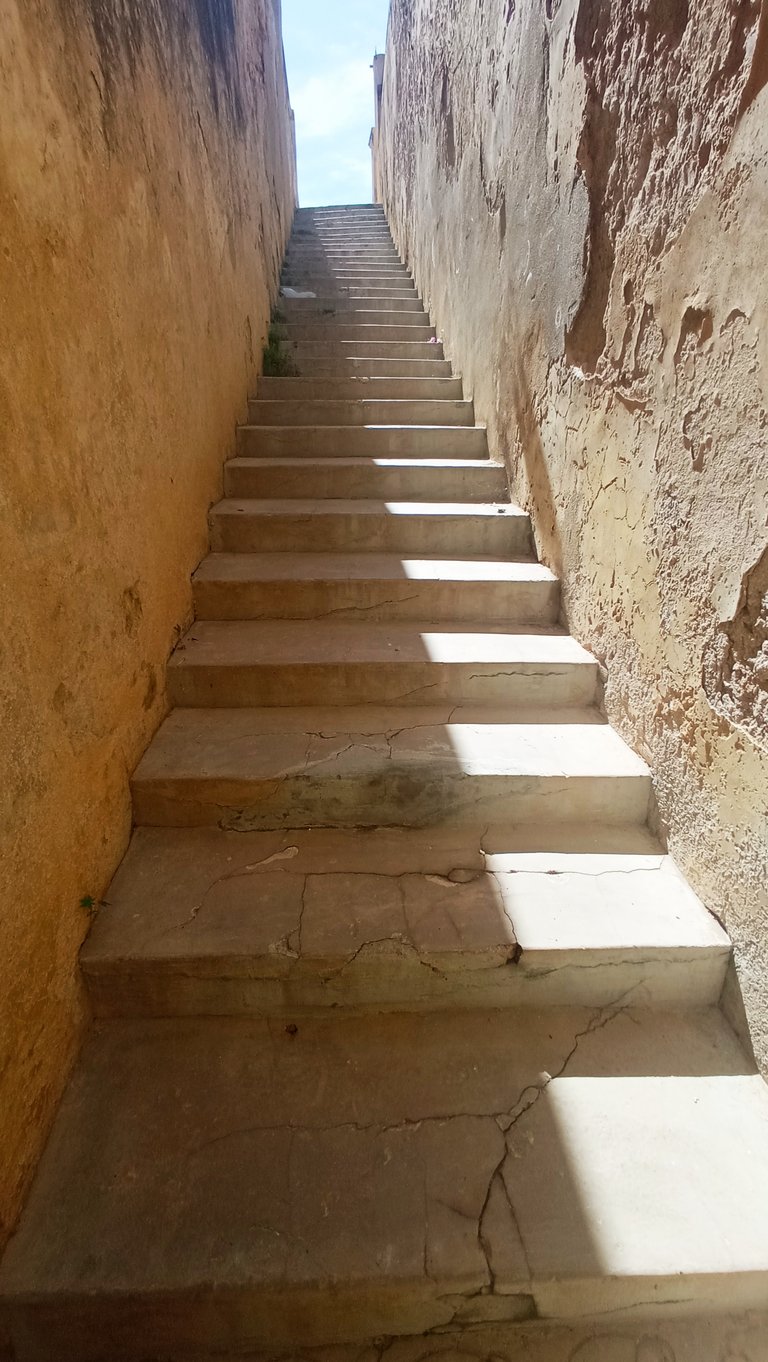
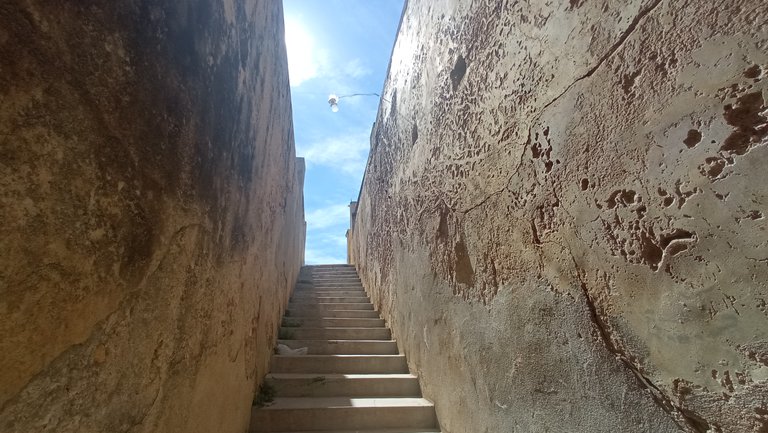

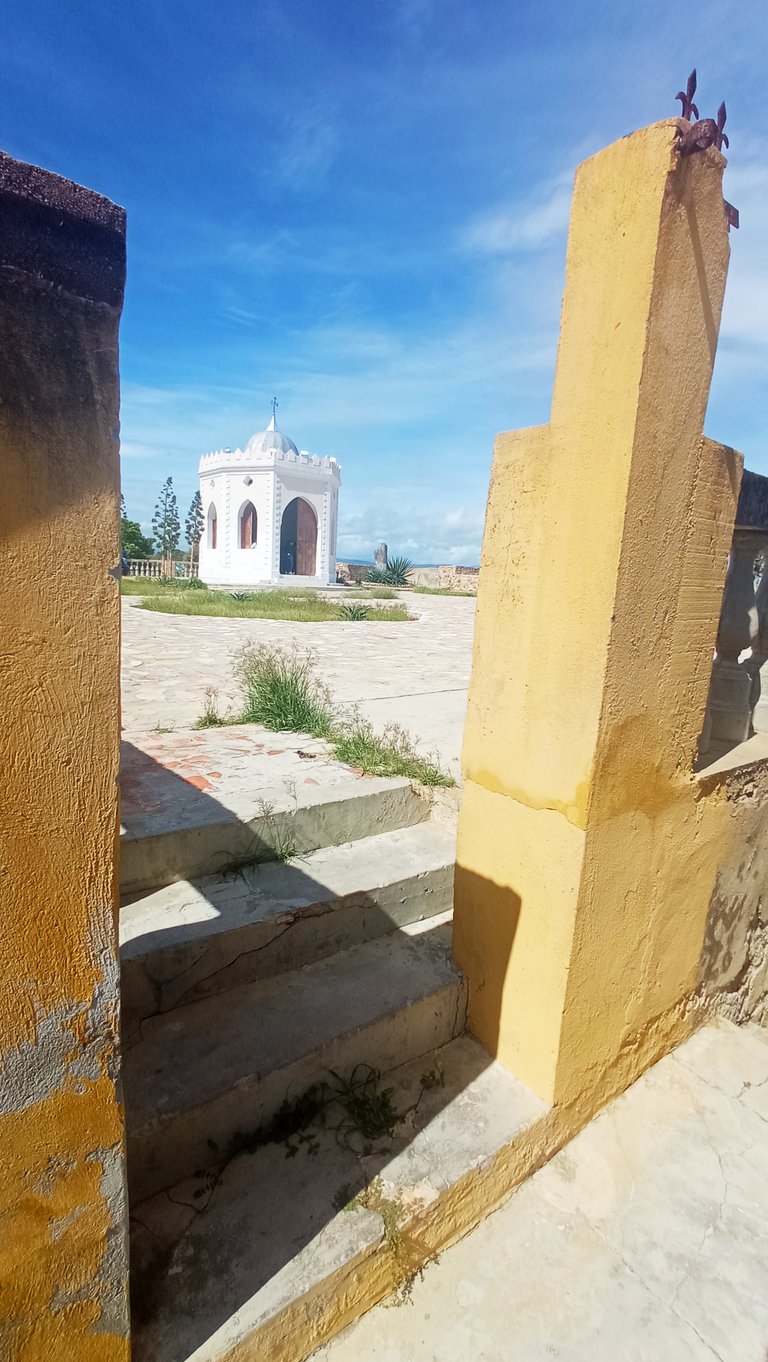
The Hermitage is arranged on a floor of flagstone, of rustic and irregular aspect. The stones are embedded in the cement, which gives it a rudimentary and natural appearance. The stone floor is adorned with hexagonal figures where grass and other plants prevail, some have colorful floral designs made with white garden stones and small cuts of red bricks.




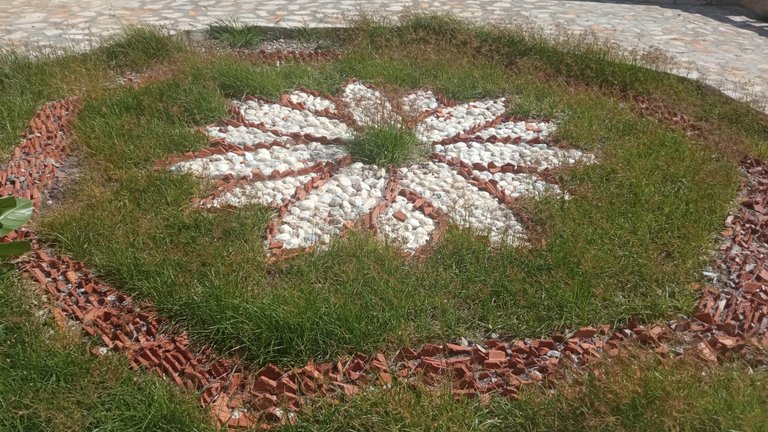

The Hermitage has windows and an arched wooden door, the images and furniture are made of wood, all arranged on a combination of porcelain tile floors and decorated tiles. A small dome stands out from the roof, which could have been built with different materials, such as stone, tile or plaster.



The height of this fortress reveals a beautiful landscape, where we can admire a magnificent panorama of the city, as well as the majestic and imposing domes of the church of Santa Inés.
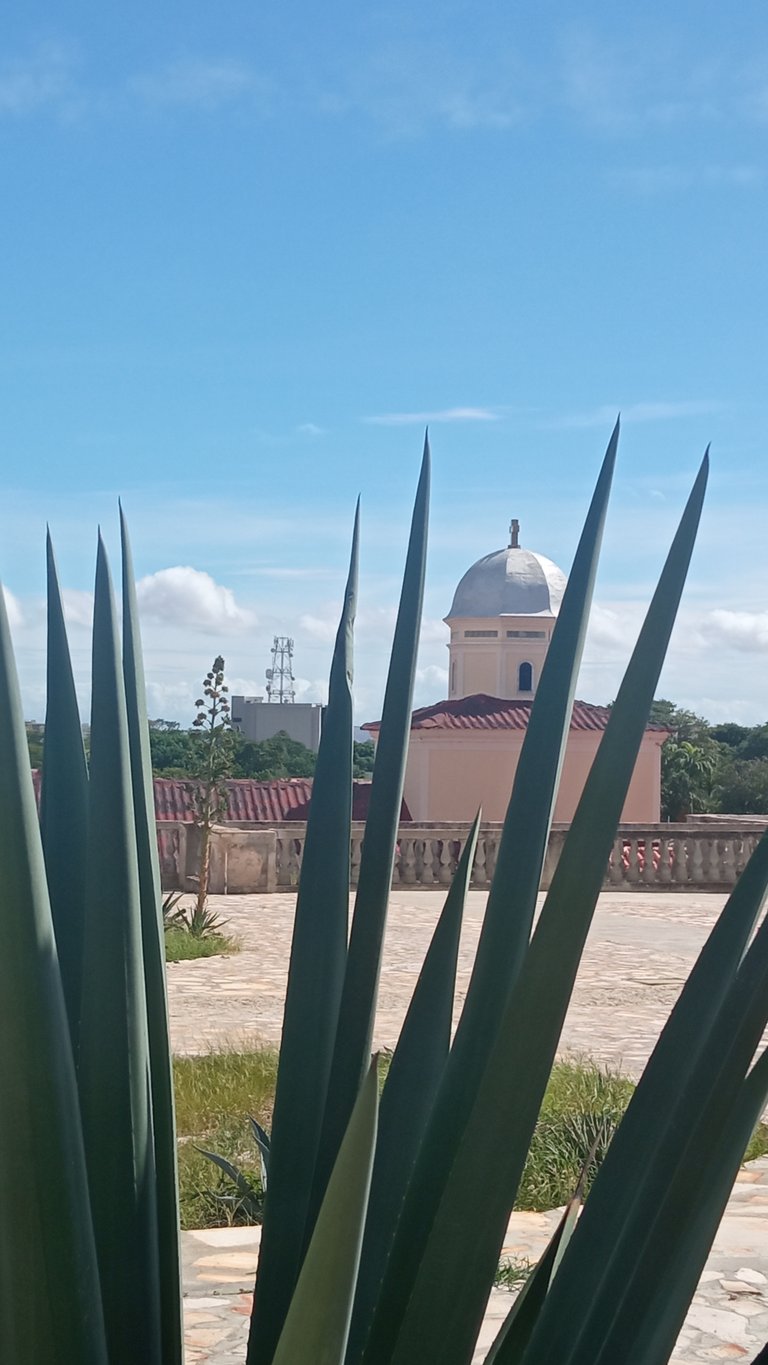
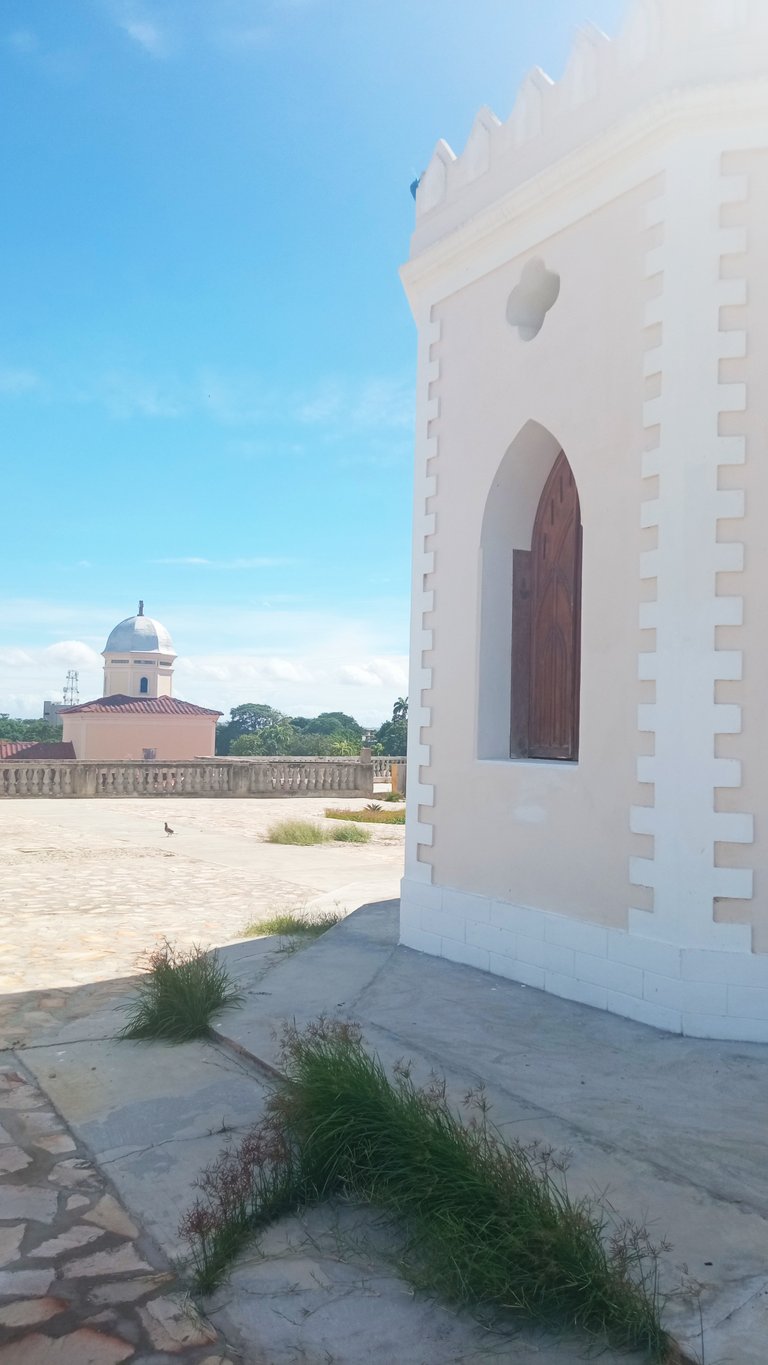


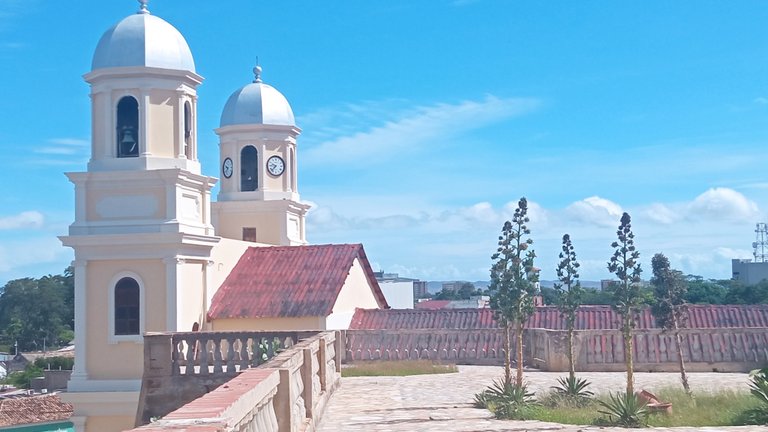
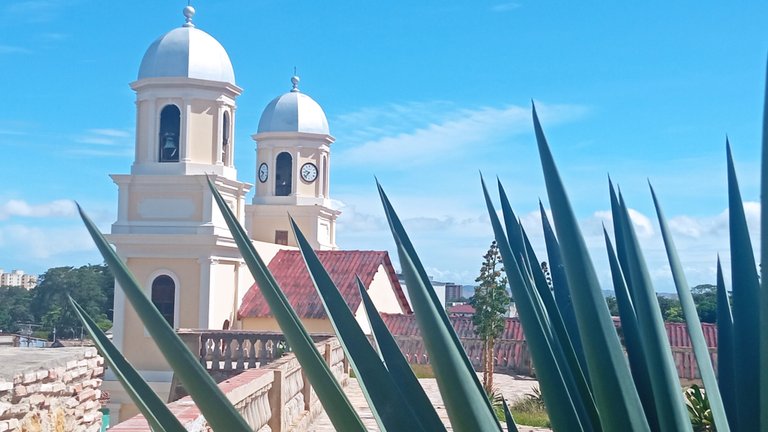
This castle built on the Quetepe hill, was one of the strongest and most solid structures of the time to withstand enemy attacks. A little more than a decade ago the railings were reinforced, replacing them with cement chaguaramos, this in order to avoid accidents. The old railings were weak and by that time guided tours had already been established to learn about the history of the castle.
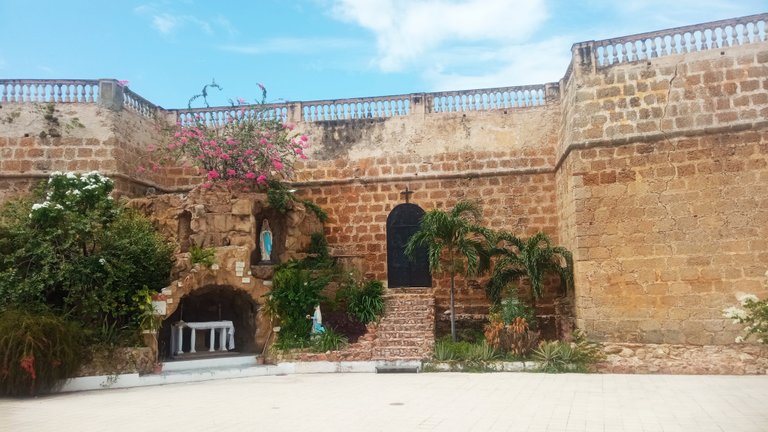


The Santa María de la Cabeza Castle is considered of Cultural Interest and Municipal Heritage, declared as such since May 2005. I hope you liked this wonderful tour as much as I did.
Thank you for reading
The photos are originals taken with my Xiaomi Redmi 9 phone. The editions were made with the GridArt application
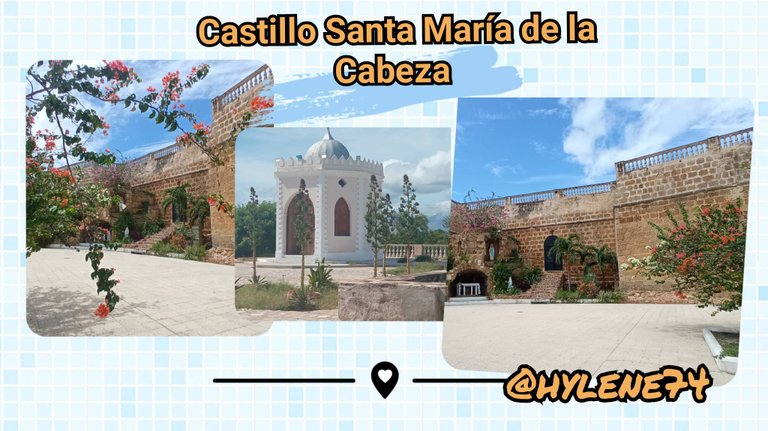
[ESP]
Saludos estimados amigos de Architecture+Design, bienvenidos a mi blog, hoy les comparto una reseña inspirada en fortalezas. En la ciudad donde resido existen dos grandes y hermosos castillos, San Antonio de la Eminencia, uno de los más conocidos entre la población cumanesa y Santa María de la Cabeza, un lugar emblemático y cargado de historia. Santa María de la Cabeza no es un castillo muy grande, ni tampoco cuenta con inmensos y lujosos salones, de hecho, de este fuerte solo han quedado sus ruinas, sin embargo, sigue siendo hermoso, además de ser uno de los lugares más icónicos de la ciudad. Porque es mi favorito?, porque se encuentra ubicado en el casco histórico de la ciudad y nada como un paseo por esta antigua zona fundacional de la capital sucrense para admirar los diseños estructurales y el estilo colonial que la caracteriza.
Este Castillo no es muy conocido entre la población cumanesa y esto se debe posiblemente a que está localizado justo al lado de la Iglesia Santa Inés, uno de los templos más antiguos de la ciudad. Pese a la antigüedad de esta iglesia, el Castillo Santa María de la Cabeza fue construido muchos años antes, por los años 1600, es increíble que esta fortificación no sea tan popular como lo es el castillo San Antonio de la Eminencia. Lo cierto es que la fortaleza Santa María de la Cabeza funcionó en sus cimientos como casa de gobierno por muchos años. Sirvió de sede para gobernadores y militares, específicamente como residencia, además de albergar pertenencias de importancia para la época considerados como tesoros invaluables. Actualmente, las ruinas del castillo Santa María de la Cabeza nos regala una estructura solemne e imponente, elaborada en bloques de caliza margosa en combinación con arenisca fosilífera, materiales que fueron extraídos de los mismos cerros que abundan en la ciudad de Cumaná.

El acceso al castillo no está disponible al público por la puerta principal, para ingresar a este debemos hacerlo por dentro de la iglesia Santa Inés, así que lo veremos como si formara parte de una estructura anexa ubicada en el patio del majestuoso templo católico, no obstante, son patrimonios diferentes y separados. Lo primero que observaremos es el piso de granito pulido, una piedra resistente al tiempo que a su vez refleja una apariencia elegante y sofisticada y que además considero ideal para los lugares históricos. Al ingresar al espacio donde se encuentra el castillo, es imposible no cautivarse con sus jardines, excelsas palmeras y flores de muchos colores que nos regalan los arbustos de Trinitaria que fueron plantados desde hace muchos años en el lugar.







Después del terremoto ocurrido en el año 1797, el castillo quedó en ruinas, básicamente inhabitable, sin embargo, los párrocos tomaron la decisión de darle un carácter de orden religioso construyendo una ermita en la parte alta y una gruta cerca de la entrada. La gruta es una réplica exacta de la que existe en Francia en honor a la Virgen de Lourdes. En la gruta se observa la estatua de una niña, simbolizando a Bernardette llevando flores a la Virgen de Lourdes. Las imágenes son alusivas a las 18 apariciones de la Virgen de Lourdes a Bernardette. Las estatuas fueron elaboradas en madera y también en cemento. La réplica de la gruta fue fabricada con rocas naturales y talladas que fueron transportadas desde donde se encuentra la original, en Francia. Por otra parte, en la gruta se observan varias placas elaboradas en mármol, donde los creyentes han plasmado mensajes de agradecimientos a la Virgen de Lourdes por los milagros recibidos.





Una vez admirada la estructura frontal, la gruta y sus alrededores, ingresé al catillo. Primero, encontramos varios escalones elaborados en piedra y una puerta de arco metálica pintada en color negro. Al adentrarnos, no se observan compartimientos en el castillo, solo una extensa escalera de concreto que nos lleva a la planta superior del mismo, allí se encuentra construida la Ermita de la Virgen del Carmen. Las paredes contienen partes rugosas y agrietadas, producto de la erosión ocurrida en el tiempo.







La Ermita está dispuesta sobre un piso de piedra laja, de aspecto rústico e irregular. Las piedras están incrustadas en el cemento, lo cual le imprime una apariencia rudimentaria y natural. Al piso de piedra lo adornan figuras hexagonales donde impera la grama y otras plantas, algunos cuentan con diseños vistosos tipo floral elaborados con piedras blancas para jardín y pequeños cortes de ladrillos rojos.






La Ermita cuenta con ventanas y una puerta de madera de estilo arco, las imágenes y el mobiliario son de madera, todo dispuesto sobre la combinación de pisos de porcelanato y baldosas decoradas. Sobresale del techo una pequeña cúpula que pudo ser construida con diversos materiales, como piedra, teja o yeso.



La altura de esta fortaleza nos revela un paisaje hermoso, donde podemos admirar un magnífico panorama de la ciudad, además de las majestuosas e imponentes cúpulas de la iglesia Santa Inés.






Este castillo construido en el cerro Quetepe, fue una de las estructuras más fuertes y sólidas de la época para soportar ataques enemigos. Hace un poco más de una década se reforzaron las barandas, reemplazándolas con chaguaramos de cemento, esto con el fin de evitar accidentes. Las antiguas barandas eran débiles y para ese entonces ya se habían establecido visitas guiadas para conocer la historia del castillo.



El Castillo Santa María de la Cabeza es considerado Bien de Interés Cultural y Patrimonio Municipal, declarado así desde mayo del año 2005. Espero que les haya gustado esta maravillosos recorrido tanto como a mí.
Gracias por leer
Las fotos son originales tomadas con mi teléfono Xiaomi Redmi 9. Las ediciones se hicieron con la aplicación GridArt
@hylene74
Posted Using INLEO
0
0
0.000
You can check out this post and your own profile on the map. Be part of the Worldmappin Community and join our Discord Channel to get in touch with other travelers, ask questions or just be updated on our latest features.
Thank you very much, regards
Hey @hylene74 you are welcome.
Thanks for using @worldmappin 😘
Feel free to vote our upcoming proposal (#348) Peakd.com / Ecency / Hive blog / HiveSigner
Excelentes tomas de esa hermosa estructura que está repleta de historia. Saludos 🌻🌷💐🌹🪻
Gracias bella, saludos
¿ᴺᵉᶜᵉˢᶦᵗᵃˢ ᴴᴮᴰ? ᵀᵉ ˡᵒ ᵖʳᵉˢᵗᵃᵐᵒˢ ᶜᵒⁿ @ruta.loans
Muchas gracias por el apoyo
Hiya, @lizanomadsoul here, just swinging by to let you know that this post made it into our Honorable Mentions in Travel Digest #2591.
Your post has been manually curated by the @worldmappin team. If you like what we're doing, please drop by to check out all the rest of today's great posts and consider supporting other authors like yourself and us so we can keep the project going!
Become part of our travel community:
Thank you very much, regards
You are very welcome @hylene74! it was well deserved. ☀️
We are already looking forward to reading more about your adventures!
Greetings @hylene74, the castle's history is interesting. I like the design and the grotto at the bottom.
Happy Saturday!
Thank you very much, that castle is very nice, even though its ruins remain. Greetings.